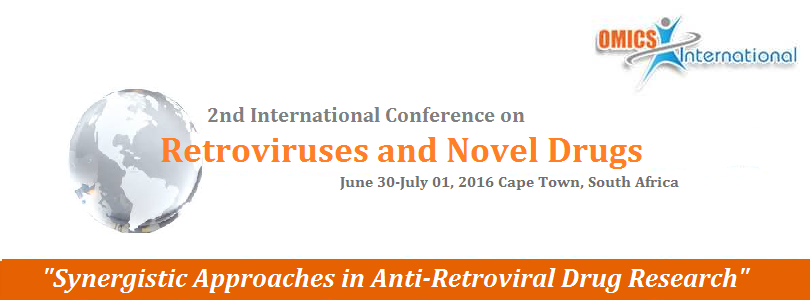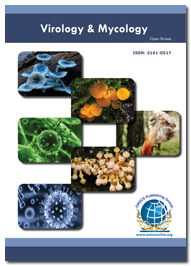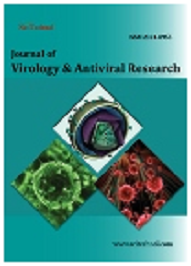Theme: Synergistic Approaches in Anti-Retroviral Drug Research
Retroviruses 2016
ConferenceSeries Ltd invites all the participants from all over the world to attend '2nd International Conference on Retroviruses & Novel Drugs' during June 30-July 01, 2016 in Cape Town, South Africa which includes prompt keynote presentations, Oral talks, Poster presentations and Exhibitions.
Retroviruses 2016 is a global platform to discuss and learn about retroviral research, viral infections, HIV virology, rational drug designs and novel therapies. The field of virology for discussion of the latest advances and ideas and to stimulate interdisciplinary interactions and to gather visionaries through the research talks, plenary lectures, symposia, workshops, invited sessions and oral and poster sessions of unsolicited contributions.
Conference Highlights
Track 1: Retroviruses
Retrovirus is a virus that is composed not of DNA but of RNA. Retroviruses have an enzyme, known as reverse transcriptase, which gives them the unique property of transcribing their RNA into DNA after entering a cell. The retroviral DNA can then integrate into the chromosomal DNA of the host cell and get expressed there.
Related Virology Conferences | HIV Meetings | AIDS Conferences |
Euro-Global Conference on Infectious Diseases, Frankfurt Germany, September 5-7 2016, International Conference on HIV/AIDS, STDs and STIs, November 30-December 02, 2015, USA; Annual Congress on Rare Diseases and Orphan Drugs May 12-13, 2016,USA; 2nd World Congress on Infectious Diseases, August 25-27, 2016, USA; 2nd International Conference on Influenza, September 12-14, 2016, Germany; 3rd World Congress on Hepatitis and Liver Diseases October 17-19, 2016, UAE; 23rd Conference on Retroviruses and Opportunistic Infections (CROI 2015), 22 – 25 February 2016, Boston; Retroviruses, May 23 - 28, 2016, Harbor, USA; HIV Vaccines, March 20—24, 2016, California, USA; 7th International Workshop on HIV Persistence during Therapy 8 – 11 December 2015, Miami; 6th International Workshop on HIV & Aging 5 – 6 October 2015, Washington DC, Southern African HIV Clinicians Society, South Africa
Track 2: Retroviral Pathogenesis
These are the group of proteins that are made and released by host cells in response to the presence of pathogens. Interferon’s are of many types: IF α, IF β and IF γ. Emerging viral disease is a major threat to global health. Due to rapid mutation and adaptation, changing environment several new viral diseases are emerging and causing human illness. Cross infection is the transfer of harmful microorganisms from one person to other. The spread of infections can occur between people, pieces of equipment, or within the body
Related Virology Conferences | HIV Meetings | AIDS Conferences |
Infectious Diseases Conference Europe, Frankfurt Germany, September 5-7 2016, 4th International Conference on Clinical Microbiology and Microbial Genomics October 05-07, 2015, USA; 5th World Congress on Virology December 07-09, 2015, USA; 2nd International Conference on Retroviruses & Novel Drugs, June 30-July 01, 2016, South Africa; 6th Euro Virology Congress and Expo March 10-12, 2016, Spain; International conference on Human Papillomavirus May 02-03, 2016, USA; International Conference on Virology and Infectious Diseases, Thailand; 17th International Workshop on HIV Persistence during Therapy, 8 – 11 December 2015, Miami; 23rd Conference on Retroviruses and Opportunistic Infections (CROI 2015) 22 – 25 February 2016, Boston; Conference on Gene Expression and Signaling in the Immune System, April 26 - 30, 2016, USA; European conference on HIV, Hepatitis Coinfection, 10-11 December 2015, London, Infectious Diseases Society of America, USA
Track 3: Retroviral Diseases
Retroviruses induce diseases that do not fit easily into any of the major categories and different tissues can influence the type of disease that develops the first retrovirus associated with disease was equine infectious anemia virus (EIAV). Anemic cats contain reduced numbers of BFU-E and CFU-E, and FeLV infection suppresses the generation of these precursors in vitro. Endogenous retroviral proteins are acting as auto antigen in liver disease patients. While murine retrovirus inactivated by human complement and are not capable of causing human disease.
Related Virology Conferences | HIV Meetings | AIDS Conferences |
Infectious Diseases Conferences Europe, Frankfurt Germany, September 5-7 2016, 3rd International Conference on HIV/AIDS, STDs & STIs, November 30-December 02, 2015, USA; 6th Euro Virology Congress and Expo March 10-12, 2016, Spain; 2nd World Congress on Infectious Diseases, August 25-27, 2016, USA; International Influenza Conference September 12-14, 2016, Germany; 2nd International Retroviruses Conference & Novel Drugs, June 30-July 01, 2016, South Africa; International conference on HIV Vaccines, March 20—24, 2016, California, USA; 6th International Workshop on HIV & Aging 5 – 6 October 2015, Washington DC; European conference on HIV Hepatitis Co-infection (EHHC) Conference10-11 December 2015, London; 7th International Workshop on HIV Persistence during Therapy 8 – 11 December 2015, Miami, European AIDS Clinical Society, Europe
Track 4: Retroviral Co- infections
Some infectious diseases can be passed from person to person. Signs and symptoms vary depending on the organism causing the infection. Human Papilloma Virus is the most common sexually transmitted diseases. Some types of these viruses can cause genital warts and cancers. Genital warts usually appear as a small bump or group of bumps in the genital area. However, if the infection is High risk, then there will be more chances of occurrence of cervical cancer. Vaccination is recommended for the patients with compromised immune system.
Related Virology Conferences | HIV Meetings | AIDS Conferences |
6th Euro Virology Congress and Expo March 10-12, 2016, Spain; 2nd World Congress on Infectious Diseases, August 25-27, 2016, USA; International Influenza Conference September 12-14, 2016, Germany; 2nd International Retroviruses Conference & Novel Drugs, June 30-July 01, 2016, South Africa; International conference on HIV Vaccines, March 20—24, 2016, California, USA; 17th International Workshop on HIV Persistence during Therapy, 8 – 11 December 2015, Miami; 23rd Conference on Retroviruses and Opportunistic Infections (CROI 2015) 22 – 25 February 2016, Boston; Conference on Gene Expression and Signalling in the Immune System, April 26 - 30, 2016, USA; European conference on HIV, Hepatitis Co-infection, 10-11 December 2015, London, International Association of Physicians in AIDS Care (IAPAC), USA
Track 5: Endogenous Retroviruses
Human endogenous retroviruses (HERV) proviruses comprise a significant part of the human genome, with approximately 98,000 ERV elements and fragments making up nearly 8%. Jaagsiekte sheep retrovirus (JSRV) is a beta retrovirus which is the causative agent of a contagious lung cancer in sheep called Jaagsiekte. Koala retrovirus was initially described as a novel endogenous retrovirus found within the koala genome and in tissues as free virions. The murine leukaemia viruses are group/type VI retroviruses belonging to the gamma retroviral genus of the Retroviridae family. The ERVS are viral elements derived from retroviruses and their genome is resembled closely and they play an active role in genome shaping.
Related Virology Conferences | HIV Meetings | AIDS Conferences |
4th International Conference on Clinical Microbiology and Microbial Genomics October 05-07, 2015, USA; 5th World Congress on Virology December 07-09, 2015, USA; 2nd International Conference on Retroviruses & Novel Drugs, June 30-July 01, 2016, South Africa; 6th Euro Virology Congress and Expo March 10-12, 2016, Spain; International conference on Human Papillomavirus May 02-03, 2016, USA; International Conference on Virology and Infectious Diseases, Thailand; 17th International Workshop on HIV Persistence during Therapy, 8 – 11 December 2015, Miami; 23rd Conference on Retroviruses and Opportunistic Infections (CROI 2015) 22 – 25 February 2016, Boston; International Conference on Gene Expression and Signalling in the Immune System, April 26 - 30, 2016, USA; European HIV Hepatitis Co-infection (EHHC) Conference10-11 December 2015, London
Track 6: Retroviruses Genome
The retroviral genome having the elements needed for reverse transcription was used to perform the other activities of retroviruses. Overall changes in the host cellular proteome upon retroviral infection intensify from the initial entry of the viruses to the incorporation of viral DNA into the host genome, and finally to the consistent latent state of infection. The host cell reacts to both the entry of viral elements and the manipulation of the host cellular machinery and resulting in a cascade of signalling events and pathway activation.
Related Virology Conferences | HIV Meetings | AIDS Conferences |
6th Euro Virology Congress and Expo March 10-12, 2016, Spain; 2nd World Congress on Infectious Diseases, August 25-27, 2016, USA; International Influenza Conference September 12-14, 2016, Germany; 2nd International Retroviruses Conference & Novel Drugs, June 30-July 01, 2016, South Africa; International conference on HIV Vaccines, March 20—24, 2016, California, USA; 17th International Workshop on HIV Persistence during Therapy, 8 – 11 December 2015, Miami; 23rd Conference on Retroviruses and Opportunistic Infections (CROI 2015) 22 – 25 February 2016, Boston; Conference on Gene Expression and Signalling in the Immune System, April 26 - 30, 2016, USA; European conference on HIV, Hepatitis Co-infection, 10-11 December 2015, London, The HIV/AIDS Civil Society Forum (CSF), Europe
Track 7: Retroviruses and Oncogenesis
Several viruses are linked with cancer in humans. As per our growing knowledge the role of viruses as a cause of cancer has led to the development of vaccines to help and prevent certain human cancers. But these vaccines can only protect against infections if they are given before the person is exposed to the cancer-promoting virus. Some of the cancer causing viruses is Hepatitis B virus (HBV) and hepatitis C virus (HCV), Human herpes virus, HPV and other cancers, Simian virus 40 etc. are most common cancer causing viruses.
Related Virology Conferences | HIV Meetings | AIDS Conferences |
Infectious Diseases Conferences Europe, Frankfurt Germany, September 5-7 2016, 3rd International Conference on HIV/AIDS, STDs & STIs, November 30-December 02, 2015, USA; 6th Euro Virology Congress and Expo March 10-12, 2016, Spain; 2nd World Congress on Infectious Diseases, August 25-27, 2016, USA; International Influenza Conference September 12-14, 2016, Germany; 2nd International Retroviruses Conference & Novel Drugs, June 30-July 01, 2016, South Africa; International conference on HIV Vaccines, March 20—24, 2016, California, USA; 6th International Workshop on HIV & Aging 5 – 6 October 2015, Washington DC; European conference on HIV Hepatitis Co-infection (EHHC) Conference10-11 December 2015, London; 7th International Workshop on HIV Persistence during Therapy 8 – 11 December 2015, Miami, British Association for Sexual Health and HIV (BASHH), UK
Track 8: Anti-Retroviral Drugs
HIV is Sexually transmitted diseases which spread by contact with infected blood or from mother to child transmission during pregnancy, childbirth or breast-feeding. It can take years before HIV weakens the immune system to the point that the person is infected with AIDS. Several major associations in USA working on HIV like UNAIDS, Centres for Disease Control and Prevention, WHO, NIH(National institute of allergy and infectious diseases).There are over 1000’s of association and societies working together to provide shelter, guidance and education. The global HIV/AIDS market, including branded products and generics, was esteemed at $11.3 billion in 2010. This market is expected to reach $11.8 billion in 2011 and increase at a 4.6% compound annual growth rate (CAGR) over the 2011-2016 estimate periods to reach $14.1 billion in 2016
Related Virology Conferences | HIV Meetings | AIDS Conferences |
4th International Conference on Clinical Microbiology and Microbial Genomics October 05-07, 2015, USA; 5th World Congress on Virology December 07-09, 2015, USA; 2nd International Conference on Retroviruses & Novel Drugs, June 30-July 01, 2016, South Africa; 6th Euro Virology Congress and Expo March 10-12, 2016, Spain; International conference on Human Papillomavirus May 02-03, 2016, USA; International Conference on Virology and Infectious Diseases, Thailand; 17th International Workshop on HIV Persistence during Therapy, 8 – 11 December 2015, Miami; 23rd Conference on Retroviruses and Opportunistic Infections (CROI 2015) 22 – 25 February 2016, Boston; International Conference on Gene Expression and Signalling in the Immune System, April 26 - 30, 2016, USA; European HIV Hepatitis Co-infection (EHHC) Conference10-11 December 2015, London, Open Society Initiative of Southern Africa (OSISA), South Africa
Track 9: Retroviral Clinical Trials
In many areas of HIV/AIDS research involve clinical trials. Clinical trials are research studies designed to find out if new drugs, vaccines, or other treatments are safe and if they work in people. Sometimes, it can be hard for patients to learn about opportunities to take part in clinical trials. Defeating HIV/AIDS will be hard if not impossible without a safe and effective viral vaccine. So, vaccine research has been and continues.
Related Virology Conferences | HIV Meetings | AIDS Conferences |
Euro-Global Conference on Infectious Diseases, Frankfurt Germany, September 5-7 2016, International Conference on HIV/AIDS, STDs and STIs, November 30-December 02, 2015, USA; Annual Congress on Rare Diseases and Orphan Drugs May 12-13, 2016,USA; 2nd World Congress on Infectious Diseases, August 25-27, 2016, USA; 2nd International Conference on Influenza, September 12-14, 2016, Germany; 3rd World Congress on Hepatitis and Liver Diseases October 17-19, 2016, UAE; 23rd Conference on Retroviruses and Opportunistic Infections (CROI 2015), 22 – 25 February 2016, Boston; Retroviruses, May 23 - 28, 2016, Harbor, USA; HIV Vaccines, March 20—24, 2016, California, USA; 7th International Workshop on HIV Persistence during Therapy 8 – 11 December 2015, Miami; 6th International Workshop on HIV & Aging 5 – 6 October 2015, Washington DC, The German AIDS Society, Germany
Track 10: Retroviral Therapeutics
Some infectious diseases can be passed from person to person. Signs and symptoms vary depending on the organism causing the infection. Human Papilloma Virus is the most common sexually transmitted infection. Some types of these viruses can cause genital warts and cancers. Genital warts usually appear as a small bump or group of bumps in the genital area. However, if the infection is High risk, then there will be more chances of occurrence of cervical cancer. Vaccination is recommended for the patients with compromised immune system.
Related Virology Conferences | HIV Meetings | AIDS Conferences |
Infectious Diseases Conference Europe, Frankfurt Germany, September 5-7 2016, 4th International Conference on Clinical Microbiology and Microbial Genomics October 05-07, 2015, USA; 5th World Congress on Virology December 07-09, 2015, USA; 2nd International Conference on Retroviruses & Novel Drugs, June 30-July 01, 2016, South Africa; 6th Euro Virology Congress and Expo March 10-12, 2016, Spain; International conference on Human Papillomavirus May 02-03, 2016, USA; International Conference on Virology and Infectious Diseases, Thailand; 17th International Workshop on HIV Persistence during Therapy, 8 – 11 December 2015, Miami; 23rd Conference on Retroviruses and Opportunistic Infections (CROI 2015) 22 – 25 February 2016, Boston; Conference on Gene Expression and Signaling in the Immune System, April 26 - 30, 2016, USA; European conference on HIV, Hepatitis Co-infection, 10-11 December 2015, London, Infectious Diseases Society of America, USA
Track 11: Retroviruses Current Research
HIV and AIDS research is a medical research that helps in prevention and treatment of HIV which is an infectious agent that helps in causing AIDS. Recent shows that the hormones namely estrogen and progesterone impacts the transmission of HIV. Examples include HIV vaccines, antiretroviral drug development, and pre exposure prophylaxis. More than thirty drugs were discovered which can only improve the life span of the patient. However, if the drugs were not used regularly, the infection reoccurs in the body which may lead to the death of the patient.
Related Virology Conferences | HIV Meetings | AIDS Conferences |
Infectious Diseases Conferences Europe, Frankfurt Germany, September 5-7 2016, 3rd International Conference on HIV/AIDS, STDs & STIs, November 30-December 02, 2015, USA; 6th Euro Virology Congress and Expo March 10-12, 2016, Spain; 2nd World Congress on Infectious Diseases, August 25-27, 2016, USA; International Influenza Conference September 12-14, 2016, Germany; 2nd International Retroviruses Conference & Novel Drugs, June 30-July 01, 2016, South Africa; International conference on HIV Vaccines, March 20—24, 2016, California, USA; 6th International Workshop on HIV & Aging 5 – 6 October 2015, Washington DC; European conference on HIV Hepatitis Co-infection (EHHC) Conference10-11 December 2015, London; 7th International Workshop on HIV Persistence during Therapy 8 – 11 December 2015, Miami, State AIDS Prevention and Control Societies (SACS), India
Track 12: Novel Therapeutic Approaches
The disputes related to antiretroviral therapy has been surmounted by adapting the various novel drug delivery methods, which pays pathway for many scientists to prove the efficiency of their techniques. Even though there are certain successful technologies emerging under this field, the progression of vesicular systems like liposomes and Nano sized systems like nanoparticles exhibits superior attention and significance over the other schemes. The formulation design and optimization of analytical techniques requires multidisciplinary research for ultimate marketing of these NDDS products especially for ARV drugs, because of the intricacy of the viral infections diseases. Certainly, the present techniques with new therapeutic agents and scheduled regimens can provide notice able improvement in the future of HIV virus infected people’s living.
Related Virology Conferences | HIV Meetings | AIDS Conferences |
6th Euro Virology Congress and Expo March 10-12, 2016, Spain; 2nd World Congress on Infectious Diseases, August 25-27, 2016, USA; International Influenza Conference September 12-14, 2016, Germany; 2nd International Retroviruses Conference & Novel Drugs, June 30-July 01, 2016, South Africa; International conference on HIV Vaccines, March 20—24, 2016, California, USA; 17th International Workshop on HIV Persistence during Therapy, 8 – 11 December 2015, Miami; 23rd Conference on Retroviruses and Opportunistic Infections (CROI 2015) 22 – 25 February 2016, Boston; Conference on Gene Expression and Signalling in the Immune System, April 26 - 30, 2016, USA; European conference on HIV, Hepatitis Co-infection, 10-11 December 2015, London, International Antiviral Society, USA
Track 13: AIDS and Epidemiology
Epidemiology is the occurrence of communicable and chronic diseases, principally in the form of epidemics which is caused by microbial infection. Infection is the invasion of foreign microbial organism on our immune system for its survival and growth. Infections are caused by infectious microorganisms including viruses, viroid’s, prions, bacteria, parasitic roundworms and pinworms, ticks, mites, fleas, and lice, ringworm, and other macro parasites such as tapeworms and other helminths. According to epidemiologic studies by WHO the top three single agent/disease killers are HIV/AIDS, TB and malaria.
Related Virology Conferences | HIV Meetings | AIDS Conferences |
4th International Conference on Clinical Microbiology and Microbial Genomics October 05-07, 2015, USA; 5th World Congress on Virology December 07-09, 2015, USA; 2nd International Conference on Retroviruses & Novel Drugs, June 30-July 01, 2016, South Africa; 6th Euro Virology Congress and Expo March 10-12, 2016, Spain; International conference on Human Papillomavirus May 02-03, 2016, USA; International Conference on Virology and Infectious Diseases, Thailand; 17th International Workshop on HIV Persistence during Therapy, 8 – 11 December 2015, Miami; 23rd Conference on Retroviruses and Opportunistic Infections (CROI 2015) 22 – 25 February 2016, Boston; International Conference on Gene Expression and Signaling in the Immune System, April 26 - 30, 2016, USA; European HIV Hepatitis Co-infection (EHHC) Conference10-11 December 2015, London, Southern African HIV Clinicians Society, South Africa
Track 14: AIDS and Africa
People who infected with the human immunodeficiency virus are called as HIV virus infected people and they abbreviated as PLWHA (People Living with HIV/AIDS). According to the AIDS epidemic update by UNAIDS in 2007, 33.2 million people are infected with HIV/AIDS and more than 68% of infected HIV individuals are living in Sub-Saharan Africa. According to a UNAIDS report, more than 4 million people were receiving antiretroviral therapy by the end of 2008 and there is an increase of 1 million compared with the end of 2007
Related Virology Conferences | HIV Meetings | AIDS Conferences |
6th Euro Virology Congress and Expo March 10-12, 2016, Spain; 2nd World Congress on Infectious Diseases, August 25-27, 2016, USA; International Influenza Conference September 12-14, 2016, Germany; 2nd International Retroviruses Conference & Novel Drugs, June 30-July 01, 2016, South Africa; International conference on HIV Vaccines, March 20—24, 2016, California, USA; 17th International Workshop on HIV Persistence during Therapy, 8 – 11 December 2015, Miami; 23rd Conference on Retroviruses and Opportunistic Infections (CROI 2015) 22 – 25 February 2016, Boston; Conference on Gene Expression and Signalling in the Immune System, April 26 - 30, 2016, USA; European conference on HIV, Hepatitis Co-infection, 10-11 December 2015, London, Infectious Diseases Society of America, USA
Track 15: AIDS, STDs and STIs
Accurate immune chromatographic assays to detect HIV virus, hepatitis C virus (HCV) and syphilis antibodies have made home or supervised self-testing possible along with feasibility and excellent test characteristics for HIV, HCV and syphilis POC tests. Several rapid oral HIV tests are now available for purchase along with combined HIV and syphilis tests using a single finger prick blood sample are evolving. Sexually transmitted infections (STIs) remain a major global public health issue, with million incident bacterial infections each year.
Related Virology Conferences | HIV Meetings | AIDS Conferences |
Infectious Diseases Conferences Europe, Frankfurt Germany, September 5-7 2016, 3rd International Conference on HIV/AIDS, STDs & STIs, November 30-December 02, 2015, USA; 6th Euro Virology Congress and Expo March 10-12, 2016, Spain; 2nd World Congress on Infectious Diseases, August 25-27, 2016, USA; International Influenza Conference September 12-14, 2016, Germany; 2nd International Retroviruses Conference & Novel Drugs, June 30-July 01, 2016, South Africa; International conference on HIV Vaccines, March 20—24, 2016, California, USA; 6th International Workshop on HIV & Aging 5 – 6 October 2015, Washington DC; European conference on HIV Hepatitis Co-infection (EHHC) Conference10-11 December 2015, London; 7th International Workshop on HIV Persistence during Therapy 8 – 11 December 2015, Miami, The HIV/AIDS Civil Society Forum (CSF), Europe
Track 16: Entrepreneur Investment Meet
Retroviruses 2016 provides great avenues for Investors seeking for investment opportunities and expanding their business horizons. Our conference is attended by participants from more than 40 countries and attracts an interesting combination of academic researchers, practitioners, and individuals who are engaged in various aspects of innovations in Retrovirology research thereby providing plenty of networking opportunities and newfound knowledge.
It is our great pleasure and honor to extend to you a warm welcome to attend the “2nd International Conference on Retroviruses and Novel Drugs” which will be held during June 30-July 01, 2016 in CapeTown, South Africa.
The theme of this year conference is “Synergistic approaches in Anti-Retroviral Drug Research” brings together renowned experts from the international scientific community to provide a premier inter-multi-trans-disciplinary to exchange their latest results related to retroviral research, infections, rational drug designs and novel therapies.
Retroviruses-2016 is anticipating participation from renowned speakers including researchers, basic scientists and clinicians, and many from leading universities, companies and virology research institutions, hospitals sharing their novel researches in the arena of Retroviruses and Novel Drugs. This virology conference paves a way to gather visionaries through the research talks, plenary lectures, symposia, workshops, invited sessions and oral and poster sessions of unsolicited contributions.
Target Audience:
- Retrovirology Students, Scientists
- Retrovirology Researchers
- Retrovirology Faculty
- Retrovirology Medical Colleges
- Virology , AIDS, HIV, Associations and Societies
- Research Labs
- Manufacturing Antiretroviral Drug Companies
OMICS International Organises 1000+Conferences Every Year across USA, Europe & Asia with support from 1000 more scientific societies and Publishes 700+Open access Journals which contains over 30000 eminent personalities, reputed scientists as editorial board members.
HIV remains mainly an urban disease, with the majority of individuals diagnosed with HIV in 2013 residing in areas with 500,000 or more people. The increasing number of new HIV infections in many countries coupled with stagnating international assistance is increasing the need for more innovative funding mechanisms and new sources of domestic funding. With an estimated $22-24 billion needed to address the global HIV epidemic in 2015, a significant resources gap is anticipated. However, the Death Notification Forms Survey of 2010, which estimates a 93% completion rate, shows that out of a total of 543,856 deaths nationwide only 18,325 deaths were attributed to HIV/AIDS Diseases. The effects of this slow and interrupted response are still being felt in a country that currently has the world’s largest HIV epidemic. Though certain groups are more at risk of HIV transmission than others, South Africa has a serious generalized epidemic affecting people from all sectors of society. For more
Summary of Retroviruses Conference (Overall Market of Retroviruses with Statistics)
The world has made remarkable inroads against the global HIV epidemic in the past three years. New HIV infections and HIV-related deaths are decreasing at quicker rates than ever before. Treatment programs have expanded rapidly, with unprecedented growth in the numbers of people receiving life-saving antiretroviral (ARV) drugs and other care. New policies and guidance on HIV prevention, diagnosis and treatment, based on the latest evidence, have been issued to improve the quality of services, enhance the efficiency of programs, and optimize HIV and broader health outcomes.
With the lighter note of this back ground “International Conference on RetroViruses and Novel Drugs 2016 welcomes all the delegates and participants Cape Town during Dates. The theme of this year conference is “Synergistic approaches in Anti-Retroviral Drug Research” which brings together renowned virology experts from the international scientific community to provide a premier inter-multi-trans-disciplinary to exchange their latest results related to retroviral research, infections, rational drug designs and novel therapies. The scientific program paves a way to gather visionaries through the research talks, plenary lectures, symposia, workshops, invited sessions and oral and poster sessions of unsolicited contributions. The researchers whose research interest meets the topics like retrovirus-host interactions, including the anti-virus immune response and the genetics of resistance to retroviral infection and to virally induced tumors.
The International and national agencies working in the AIDS research are The Joint United Nations Program on HIV/AIDS (UNAIDS), Australian AID (AusAID), British AID (DFID), US Government Assistance (USG), German AID (GTZ), Bill and Melinda Gates Foundation (BMGF), Clinton Foundation (CF), Global Fund for AIDS, TB and Malaria (GFATM), International Labour Organization (ILO), United Nations Development Programme (UNDP), UNFPA, United Nations Children’s Fund (UNICEF), World Bank (WB), World Health Organization (WHO), IAVI and other key private players include Abbott Laboratories, F. Hoffmann-La Roche Ltd., Shanghai Kehua Bio-engineering Co., Ltd., Siemens Healthcare, bioMerieux S.A., DiaSorin S.p.A, Qiagen N.V., Transasia Bio-Medicals Ltd., Alere Inc., Beckman Coulter, Inc., Gen-Probe Incorporated, Becton, Dickinson and Company, Bio-Rad Laboratories, Inc., PerkinElmer, Inc., Trivitron Healthcare Pvt Ltd., Span Diagnostics Ltd., Thermo Fisher Scientific Inc., Tulip Diagnostics (P) Ltd, Cellestis Limited, Chembio Diagnostics, Inc. and Hologic, Inc
Scope and Importance of Retroviruses
Cape Town is the second most populous urban area in South Africa. It is also the provincial capital and primate city of the Western Cape It forms part of the City of Cape Town metropolitan municipality. As of 2014 it is the 10th most populous city in Africa and home to 64% of the Western Cape's population. Recent data on HIV diagnosis make it clear that HIV touches every corner of United States. According to these data, by region, the number of people diagnosed with HIV and the of HIV diagnoses (number of diagnoses per 100,000 people) is highest in the South (24,323 diagnoses or 20.5 per 100,000 people). Next highest is the Northeast (8,908; 15.9), followed by the West (8,013; 10.8) and the Midwest (6,109; 9.0). From 2009 to 2013, the rate of HIV diagnoses in the West decreased, and the rates in the Northeast, Midwest, and South remained stable.
HIV remains mainly an urban disease, with the majority of individuals diagnosed with HIV in 2013 residing in areas with 500,000 or more people. Areas hardest hit (by ranking of HIV cases per 100,000 people) include Atlanta, GA; Miami, FL; Washington DC; Baton Rouge and New Orleans, LA; Memphis, TN and Baltimore. In 2010, an estimated 280,000 South Africans died of HIV/AIDS. In the aught, it is estimated that between 42% and 47% of all deaths among South Africans were HIV/AIDS deaths. However, the Death Notification Forms Survey of 2010, which estimates a 93% completion rate, shows that out of a total of 543,856 deaths nationwide only 18,325 deaths were attributed to HIV/AIDS Diseases. The effects of this slow and interrupted response are still being felt in a country that currently has the world’s largest HIV epidemic. Though certain groups are more at risk of HIV transmission than others, South Africa has a serious generalized epidemic affecting people from all sectors of society.
Why it’s in Cape Town South Africa
South Africa has the largest antiretroviral treatment rollout program in the world. Life expectancy has also increased by 5 years since the height of the epidemic. 2 Moreover, these efforts have been largely financed from its own domestic resources. The country now invests more than $1 billion annually to run its HIV and AIDS programs. Depending on the Compound annual growth rate of retrovirus market of South Africa stands in first rank in European countries and Asia. So the Retroviruses-2016 in going to be held in South Africa
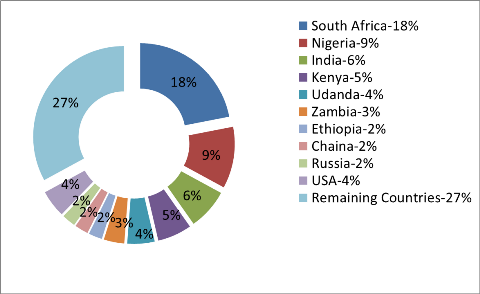
Members Associated with Retroviruses
As per the recent analysis reports we mentioned the approximate values such as we noted 300 members working on retroviruses in Cape Town, 4000 members in South Africa and 300000 members associated with retroviruses across the world.
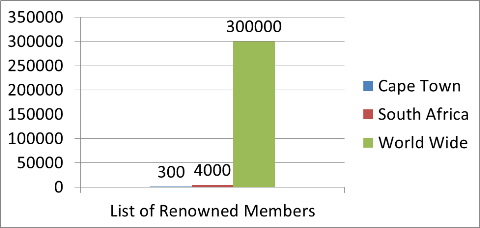
Hospitals Associated with Retroviruses
As per our estimation there are 41 Hospital which treating antiretroviral diseases in Cape Town, 200 Hospitals in South Africa and 1000 Hospitals associated with retroviruses across the world.

Societies Associated with Retroviruses
There will be 20 societies in Cape Town, 27 in South Africa and 70 societies may be associated with retroviruses across the world
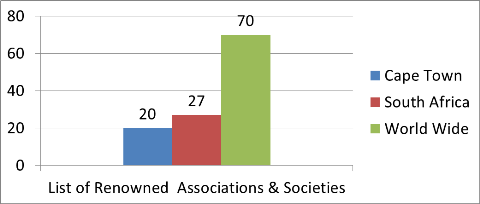
Industries Associated with Retroviruses
There will be 20 societies in Cape Town, 27 in South Africa and 70 societies may be associated with retroviruses across the world
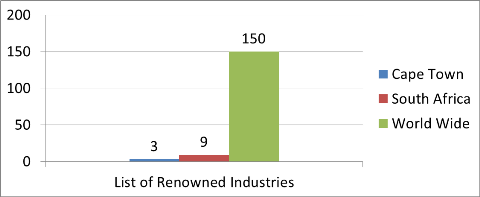
Universities Associated with Retroviruses
There are 3 major universities in Cape Town, 20 in South Africa and 800 universities may be associated with retroviruses across the world
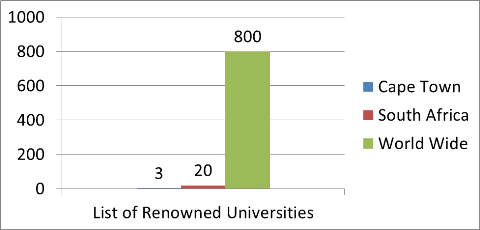
Market Value on Retroviruses
Number of People Receiving Antiretroviral Therapy
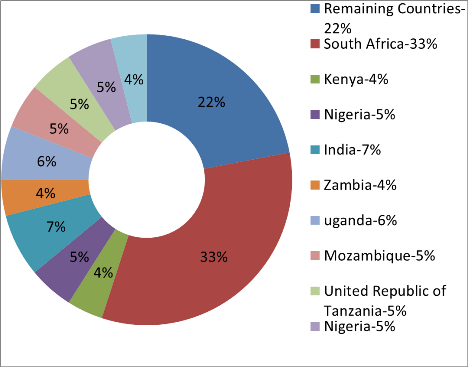
Worldwide efforts continue to reduce the number of new annual HIV infections. Globally in 2012, an estimated 2.3 million [1.9 million–2.7 million] people newly acquired HIV – 12% fewer than the estimated 2.6 million [2 million–2.8 million] new infections in 2009. Similarly, the number of new HIV infections among young people aged 15–24 decreased by around 10% from 865 000 to 780 000 between 2009 and 2012 putting the targeted 50% decrease by 2015 out of reach unless prevention efforts are intensified considerably. The current steady, albeit slow, decrease in new HIV infections has been due largely to reductions in the African Region. Encouragingly, the overall pace at which new infections are decreasing may now be quickening, as countries continue to scale-up prevention services and focus them more sharply where most HIV transmission is occurring.

Market Growth of Retroviruses in the last and upcoming ten years
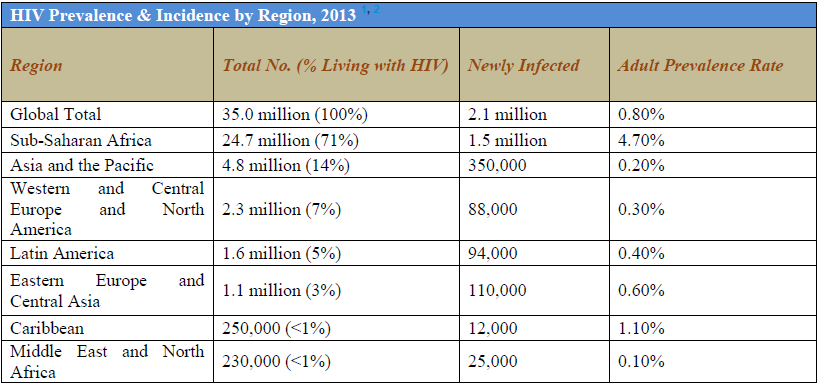
Expanded access to ART and declining incidence of HIV infection have led to a steep fall globally in the number of adults and children dying from HIV-related causes. The estimated 1.6 million [1.4–1.9 million] HIV-related deaths globally in 2012 were 30% fewer than in 2005 and 20% fewer than in 2009. This puts the world on track to exceed the target of reducing HIV-related deaths by 25% by 2015. So, that the ART drugs usage and its market growth will also reduce globally in coming years.
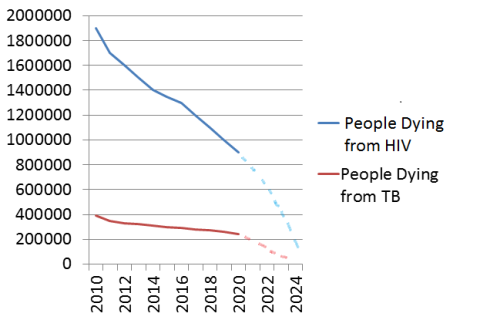
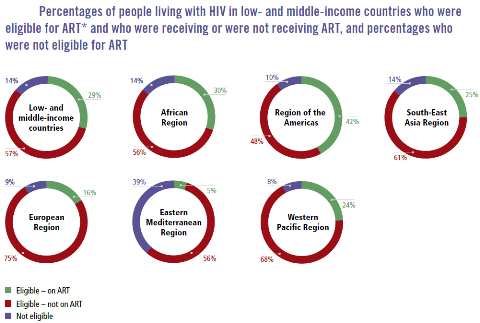
Products manufactured by the industry related Retroviruses and its Market Value.
The antiretroviral drug Tivicay, will become the leading integrase inhibitor for the treatment of HIV by 2016, according to independent analyst firm Datamonitor Healthcare. It is expected to generate annual sales of up to $2.1bn by 2022 in the US, Japan and five major EU markets*, equating to 12.6% of the total combined value of these markets.
The combined sales value of HIV drugs in the seven major markets** is expected to increase by 40% in the next decade, rising from $11.9bn in 2013 to $16.8bn in 2022. It is forecast that the market will peak at $17.3bn in 2020 after a strong period of growth stimulated by new drug launches and the increasing prevalence of HIV.
Between the forecast dates, the global patient population for HIV is expected to increase slowly, from 1.23 million in 2013 to just less than 1.4 million in 2022. Out of the five major EU markets*, the UK will remain largest by patient number over the next decade, with the patient population estimated to be 135 million by 2022. The projected annual growth rate for the UK is 6.2%, the fastest of all the major markets. At a cost of US$10,000-15,000 per person per year, these antiretroviral drugs (ARVs) were far too expensive for the majority of people infected with HIV in resource poor countries. Five years after HAART was introduced in the West, only 2 percent of people in developing countries were receiving the life-saving drugs. 4 In order for treatment to reach people living with HIV in the developing world, the price of the drugs clearly needed to come down to an affordable level.
At the beginning of the new millennium there was a breakthrough in treatment provision for resource poor areas when an Indian pharmaceutical company started to produce generic Antiretrovirals that were exactly the same as those made by large pharmaceutical companies, but significantly cheaper. This sparked a price war between branded and generic drug makers, which forced the large pharmaceutical companies to lower the price of their HIV drugs. This competition, coupled with pressure from activists, organizations - such as the Clinton Foundation - and governments of poor countries with severe HIV epidemics, dramatically reduced the price of ARVs for developing countries. By the middle of 2001, triple combination therapy was available from Indian generic manufacturers for as little as $295 per person per year. The price of ARVs for low and middle income countries (LMICs) has continued to fall. In 2013, the average cost of first-line antiretroviral treatment (ART) for LMICs was $115 per patient per year (PPY) and $330 PPY for second-line ART. The price of third-line ART has also decreased but LMICs still pay on average, more than $1500 PPY. Many middle-income countries in Asia, Latin America, Eastern Europe and Central Asia continue to pay higher prices due their inability to access cheaper generic ARVs.
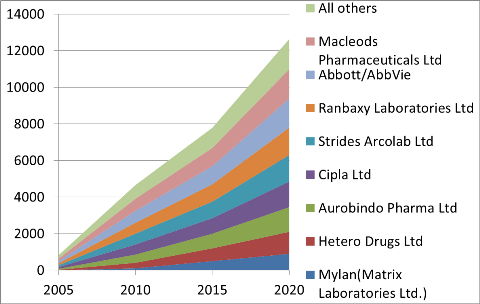
Fund Allotment to Retroviruses
The HIV response is funded by various stakeholders, including multilateral institutions, the private sector and low- and middle-income country governments. Donor governments account for most of the funding for HIV in many hard hit countries, mainly through the Global Fund to Fights AIDS, Tuberculosis and Malaria and other channels such as UNITAID.
Despite the rise in resources in the last decade to address HIV in low- and middle-income countries, in 2010 UNAIDS estimated an annual resource gap of $6 billion. In 2012, continued gains were made in mobilizing financial resources for the AIDS response. In 2013, an estimated US$ 18.9 billion was available for HIV program in low- and middle-income countries – a 10 percent increase over 2011. The estimated annual need by 2015 is considered to be between US $22-24 billion.
South Africa Partners, Inc., has received a $17.5 million grant over five years from the U.S. Centers for Disease Control and Prevention. The grant, of $3.5 million each year from 2015 through 2019, will fund technical assistance and support for the development and implementation of key aspects of HIV/AIDS care and support services in South Africa.
In 2013, funding for the global HIV and AIDS response reached its highest ever level with an estimated $19.1 billion made available for programs in low and middle-income countries.
However, though progress has been made in mobilizing resources for the response, the increasing number of new HIV infections in many countries coupled with stagnating international assistance is increasing the need for more innovative funding mechanisms and new sources of domestic funding. With an estimated $22-24 billion needed to address the global HIV epidemic in 2015, a significant resources gap is anticipated.
In 2013, funding from donor governments actually fell to $8.07 billion a 3 percent drop on 2012. This drop was primarily the result of declining annual commitments by the United States government - the world's largest HIV donor. However, disbursements (resources made available to the field) increased by 8 percent to $8.46 billion.
Statistics of Physicians, Researchers and Academicians working on Retroviruses Research
There are 3 major universities in Cape Town, 20 in South Africa and 800 universities may be associated with retroviruses across the world
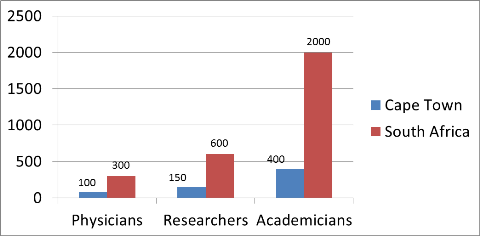

Conference Highlights
- Retroviruses
- Retroviral Pathogenesis
- Retroviral Diseases
- Endogenous Retroviruses
- Retroviruses Genome
- Retroviral Co- infections
- Retroviruses and Oncogenesis
- Anti Retroviral Drugs
- Retroviral Clinical Trials
- Retroviral Therapeutics
- Retroviruses Current Research
- Novel Therapeutic Approaches
- AIDS and Epidemiology
- HIV/AIDS and Africa
- AIDS, STDs and STIs
- Entrepreneur Investment Meet
To share your views and research, please click here to register for the Conference.
To Collaborate Scientific Professionals around the World
| Conference Date | June 30- July 01, 2016 | ||
| Sponsors & Exhibitors |
|
||
| Speaker Opportunity Closed | Day 1 | Day 2 | |
| Poster Opportunity Closed | Click Here to View | ||
Special Issues
All accepted abstracts will be published in respective Our International Journals.
- Journal of Virology & Mycology
- Journal of Antivirals & Antiretrovirals
- Journal of Drug Metabolism & Toxicology
Abstracts will be provided with Digital Object Identifier by

